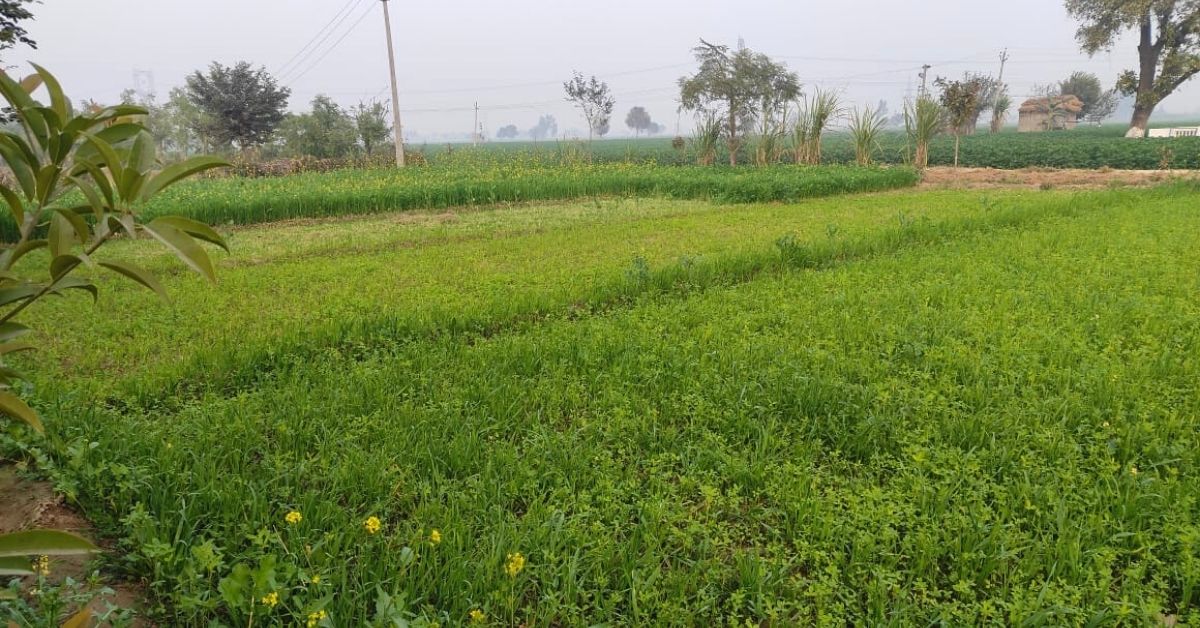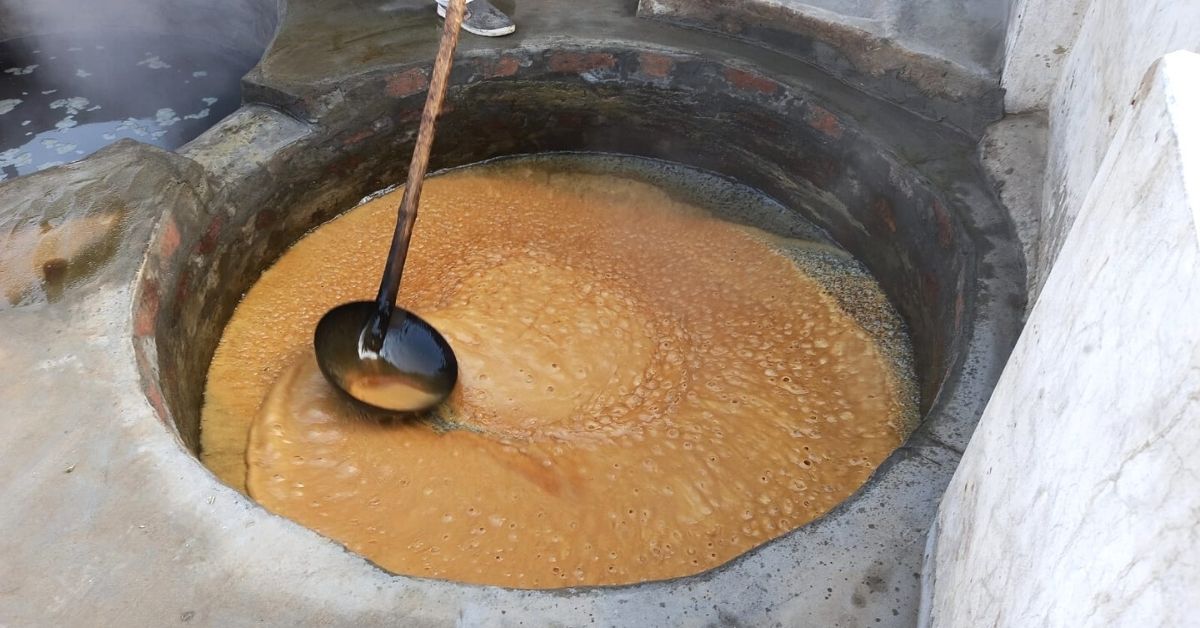- Popular Post

shastarSingh
-
Posts
3,349 -
Joined
-
Days Won
66
Content Type
Profiles
Calendar
Forums
Posts posted by shastarSingh
-
-
45 minutes ago, dallysingh101 said:
How can we tell if someone's bhagti is genuine and not 'social bhagti' i.e done to impress their social circles?
Some people often go to extreme lengths to keep a perception of respect up, especially in a community like ours.
I've heard that some mahapursh say that one should keep their bhagti gupt.
The other issue is (as we've discussed umpteen times on numerous forums now) apnay are real quick to exalt people and put them on a pedestal. This encourages pakhaand. Then there is the inevitable deflation when these people's human nature comes out, Moosewala being a good contemporary example and I'm sure you probably know even more. So the problem is two ways but apnay putting people on pedestals is central to it. They set themselves up for disappointment in this way I reckon? Why can't they be more grounded? It's like they get over excited easily?
Very good points.
One of the reasons we don't hv unity in the panth is that every person is busy doing ustat of the leader or baba or jathedaar of their group.
2 -
My mammaa is also a lawyer. Most of my uncles are also lawyers.
Luckily all our safe.
They are saying that BJP is behind this bomb blast.
1 -
You know what my dad is a lawyer and has his chamber is pretty near to the place where there was bomb blast.
Luckily he didn't go to the courts today.
2 -
11 minutes ago, ipledgeblue said:
if he was doing the buying and selling part of his time, then I don't see the problem as long as he kept amritvela etc
But this is not true right?
Actually the sangat which included nice bazurg Singhs were surprised to see him become so interested in Maya.
They told him that he has more than enough money and he shud do as much bhagti as possible in his last years.
2 -
Our panth is full of groups and people in a group feel that the baba/jathedaar/leader of their group is perfect and cannot make mistake.
Only Guru Sahib is perfect. Secondly anyone alive can make mistake and can come under the influence of Maya.
So we shud listen carefully to all panthic groups and shud be willing to change ourselves as well.
There was a great amritdhari in Ludhiana who was doing 5-6 hours of amritvela for about 50 years.
But to the surprise of the Sangat, in the last 10 years of his life, he wasted his time in buying and selling plots. May be he was caught in moh(attachment) of his grand children. He was already rich but he wanted to make more assets for his grand children
1 -
30 minutes ago, Premi5 said:
@shastarSinghthis Lohara village is near you I think
https://www.thebetterindia.com/269817/punjab-farmer-earns-lakhs-nri-quit-job-sugarcane-jaggery-buy/
- Himanshu Nitnaware
-
December 20, 2021
NRI Quits Job & Returns To India To Start Organic Farming; Earns Rs 12 Lakh/Year
Rajwinder Singh Dhaliwal quit his job as a chef and returned to Punjab to start organic farming, growing sugarcane and selling value added jaggery. Here’s how he did it
In 2007, Punjab-based Rajwinder Singh Dhaliwal’s family moved to the US, when he was 33-years-old. Initially, Rajwinder earned his livelihood by driving trucks, and later pursued a degree in hotel management.
Eventually, he became a successful chef, but later, decided to return to India. “The immense exposure to the culture, family system, lifestyle and other aspects of the USA helped me learn about the people there. But I realised that I valued Indian culture more, and decided to return to my roots,” he tells The Better India.
After returning, Rajwinder launched a pizza restaurant with multiple chains in Punjab. “I signed up for a franchise model in 2013, and a couple of years later, I launched one with my brand and expanded the restaurant chain,” he says.
“I was earning well with this business, but it came with a lot of stress. I also demanded that I deal with the bureaucracy and other government machinery. I believe that farming is peaceful and independent. My family practised farming using chemicals, but I wanted to try organic farming for health reasons. Managing business and farming simultaneously was unfeasible, so I decided to quit the restaurant venture,” he explains.
Today, Rajwinder is growing crops on six acres of land using integrated farming methods, and earning high profits for his efforts.
Creating an organic paradise
 Rajwinder’s farm in Lohara, Punjab.
Rajwinder’s farm in Lohara, Punjab.
In 2017, after deciding to wind up his business, the 47-year-old moved to Lohara village to experiment with organic farming on his 8-acre ancestral land. But there was a flip side. Rajwinder had never toiled in the field.
“On social media, I met some farmers practising organic farming who helped during the initial stages. I also took help from NGOs and visited farmers in person. These visits helped me understand different organic practices. I did not imitate any specific method adopted by others, and innovated one that suited my needs,” he adds.
He spent almost a year carving out a 6-acre land by introducing cow dung, compost and other organic matter. “It took months to generate the right amount of bacteria and other organic matter that would facilitate the growth of plants,” the farmer says.
Initially, Rajwinder started growing sugarcane on a 5-acre land. He complimented plants such as turmeric, fruit-bearing trees such as guava, chikoo, plum, pear, kinnow, pomegranate and others. “I identified 23 fruit varieties and have planted 3,000 of them. In addition, I grew potato, garlic, mustard, onion, rose and other seasonal plants,” he says.
Rajwinder adds that the fruit plants, which are still at a young age, will provide an additional income in the long run. The seasonal vegetables allow a steady cash flow through the year. Moreover, he has specifically chosen to plant sugarcane varieties suitable for producing sugar and jaggery. He used mulching, drip irrigation and other modern methods like organic decomposer and equipment to reduce the water requirement for crops. “The overall measures have reduced the water requirement by 75 per cent compared to traditional farming methods,” he shares.
 Jaggery being made at Rajwinder’s farm.
Jaggery being made at Rajwinder’s farm.
“I planted sugarcane crop varieties like 64, 89003, 85 and 88, which are suitable for agro-processing and started making jaggery and sugar from the harvest. Having a setup is inexpensive and feasible. Rather than selling conventional jaggery, I value-added it by using sesame, dry fruits, turmeric, holy basil, ajwain, fennel and moringa,” he says.
Rajwinder adds that conventional jaggery costs Rs 310 per kilo, whereas he offered the unique product at Rs 370 for the same quantity.
By the third season, his sugarcane yield increased to 10 tonnes a year, and now reached 12 tonnes. “Apart from jaggery, I process the sugarcane juice further to convert it into refined and brown organic sugar,” he says.
Rajwinder also processes turmeric into powder to sell it in the market. “I did not have any market linkages and used social media platforms like Facebook and Instagram to generate sales. I did not make packets but offered loose products and posted pictures explaining their quality and purity,” he says, adding, “It also helped me cut down on plastic usage and take an eco-friendly approach.”
Earning 40 per cent more
Today, the total revenue from the overall sales earn Rajwinder Rs 12 lakh per year, he says. “I earn Rs 8 lakh by selling jaggery alone. If I sell sugarcane to the factory, I will receive approximately Rs 350 per quintal. But processing the same is earning me Rs 1,100 equal quantity. I sell brown sugar at Rs 140 a kilo, a premium than the refined sugar,” he says.
“I earn about 40 per cent more than a farmer can from the 6-acre land. All thanks to agro-processing,” he adds.
 Organic jaggery at Lohara farm.
Organic jaggery at Lohara farm.
Speaking about charging a higher price for his products to the customers, Rajwinder says he explains to customers in detail why this cost is justified. “I tell them they will require less quantity of jaggery or turmeric for their daily use, as compared to other products in the market. The premium is for the purity and superior quality of the products, as they are non-adulterated and not made from inferior raw materials. The overall sugar or jaggery is reduced by 30 per cent because of the better sweetness. Hence, the money paid for the better quality products does not become economically expensive,” he says.
Tajinder Singh from Ludhiana is one of Rajwinder’s customers, and has become a regular since he first tried the products. “I believe in organic food and have consumed jaggery and sugar from Rajwinder’s farm. I trust the quality of the products and have been a loyal customer for the past few months,” he says.
Though Rajwinder has sought success in his agricultural adventures, his family is not entirely supportive of his activity. “My family is unhappy with the decision to practise agriculture. I have moved 35 km away from the city to my farm, and it causes much inconvenience, especially to my two daughters who are fond of urban life,” he notes.
But Rajwinder is determined to continue and feels confident about his current progress. He is sure his income will multiply once the trees start bearing fruits, as he shares plans about expanding his agricultural land by taking more varieties of crops.
“There is much adulteration in food, and instead of bettering our health, the items do more harm to the human body. I aim to produce quality food products similar to how I grew up during my childhood and the earlier generations who were blessed by the same,” Rajwinder adds.
Edited by Divya Sethu
Nice story.
Yes this village seeme to be in Ludhiana district.
2 -
8 minutes ago, shastarSingh said:
No I don't mean that.
Hair is a great gift of God and it's excellent to be keshadhari.
I m saying that keshadharis who claim to be true Sikhs but reject the importance of amrit and punj kakaar end up doing greater damage to panth than monaas.
"Professor" Darshan "singh" and his missionary gang has done huge damage to khalsa panth as compared to the damage done by any monaa.
They hv put doubt in the minds of the Sikhs regarding the historicity and importance of amrit, punj kakaar, nitnem baanis and Dasam Granth.
2 -
1 minute ago, Premi5 said:
You are sort of saying it's better to be either mona or Amritdhari. Many Sikhs are in-between
No I don't mean that.
Hair is a great gift of God and it's excellent to be keshadhari.
I m saying that keshadharis who claim to be true Sikhs but reject the importance of amrit and punj kakaar end up doing greater damage to panth than monaas.
2 -
- Popular Post
- Popular Post
12 minutes ago, Jai Tegang! said:Then there are some monay who tend to show no respect for Sikhi saroop and undermine its importance with ridicule or even hostility.
U missed one category.
Monaas don't claim to be true Sikhs but there are keshadharis who claim to be true Sikhs but reject the importance of amrit and punj kakaar.
Such keshadharis r more dangerous than monaas who ridicule sikhi Sarup.
3 -
- Popular Post
- Popular Post
5 minutes ago, Premi5 said:Remember Giani Thakur Singh jee's katha a few years back, he mentioned a mona from UK who was doing several hours simran daily
Yes thanks to Giani thakur Singh ji,lots of sangat including monaas hv started doing brahm kavach.
What a Bani brahm kavach is!
Modern powerful scientific weapons are zero in front of the power of Brahm Kavach.
3 -
2 minutes ago, Jacfsing2 said:
That’s true, Haumai makes even the greatest Sikhs fall.
Yes it's a subtle game.
One shud remain dust of all while doing simran.
There was a great amritdhari in Ludhiana who was doing 5-6 hours of amritvela for about 50 years.
But to the surprise of the Sangat, in the last 10 years of his life, he wasted his time in buying and selling plots. May be he was caught in moh(attachment) of his grand children. He was already rich but he wanted to make more assets for his grand children.
2 -
- Popular Post
- Popular Post
5 minutes ago, dallysingh101 said:I think more exist than people may think.
A lot don't like to advertise it.
But it's really inspiring to see monaas doing simran.
I also see a lot of Non amritdhari bibis who do a bit of make up and eyebrows but still do lots of sewa and simran in gurdwaras.
3 -
On 12/21/2021 at 4:33 PM, shastarSingh said:
I hv seen many amritdharis speak bad about monaas or treat them badly. I feel monaas shud be treated with love and sikhi parchar shud be done on them.
One of my relative who is a monaa lives in a pind near mohali. He gets up at 3:45 am daily and does paatth of japji Sahib, sukhmani sahib and zafarnama Sahib. In the evening he does rehraas Sahib and kirtan sohila. He is trying to find a religious girl and wants to keep hair before marriage.
My point is that monaas are our brothers and we shud treat them with love and respect.
Anyone else know or met a monaa who is into simran and gurbani?
2 -
- Popular Post
Sadly no comment by anyone.
This village shud be made popular in the whole sikh panth and all our parcharaks shud immediately go to this village and do parchar.
3 -
I hv been told that some naamdhari group wants to join Khalsa panth.
Naamdharis totally believe in Dasam Granth Sahib.
They also hv a very old Sarup of Sarbloh Granth Sahib in their khazana.
I am not saying that Sikhs shud mix up with naamdharis.
We shud remain separate and shud keep a distance from naamdharis but we shud not abuse them.
2 -
- Popular Post
- Popular Post
31 minutes ago, Jacfsing2 said:Don’t you judge bhappas though?
You wrote: The naamdharis basically view Sikhs as a sect of Hindus.
are you judging naamdharis?
no, u r stating a fact.
same way, I don't judge bhappaas.
I feel bhappaas r fine people as long as they don't control a panthic organization because when they control a panthic organization they:
1. Finish off warrior mindset of the organisation.
2. They flirt a bit with fellow girls and sometimes even their cousin sisters.
6 -
- Popular Post
- Popular Post
I also feel that monaas shud be first brought closer to Gurbani paatth, kirtan and guritihaas and slowly slowly shud be told to keep hair.
Some amritdharis would meet a monaa for the first time and would scold him for cutting hair and force him to keep hair. I don't think that's the right way of dealing with monaa brothers.
5 -
- Popular Post
- Popular Post
I hv seen many amritdharis speak bad about monaas or treat them badly. I feel monaas shud be treated with love and sikhi parchar shud be done on them.
One of my relative who is a monaa lives in a pind near mohali. He gets up at 3:45 am daily and does paatth of japji Sahib, sukhmani sahib and zafarnama Sahib. In the evening he does rehraas Sahib and kirtan sohila. He is trying to find a religious girl and wants to keep hair before marriage.
My point is that monaas are our brothers and we shud treat them with love and respect.
5 -
- Popular Post
- Popular Post
5 -
-
- Popular Post
Haryana villages are waiting for sikhi parchar but our parcharaks are ignoring haryana.
4 -
9 minutes ago, proudkaur21 said:
muslim women are always true to their ideals.
They haven't become besharam like some of our Punjabis have.
1 -
10 minutes ago, Singh1989 said:
Could be exposure of media. Or even advance knitting machines thas able to produce tight clothing, only faster than before.
This is main reason why Guru Amar Dass Ji said men should control their eyes... Even if it's right in front of us at work, walking the streets.
What about while driving the car?
2 -
- Popular Post
- Popular Post
https://funerallive.ca/bcvc/viewing/singh-december172021/
A great soul has left us but we still have his posts on Tapoban.org and gurmatbibek.com
Bhai Sahib can also be seen in some videos on YouTube.
5




How a great amritdhari became a bit mayadhari in his last years
in WHAT'S HAPPENING?
Posted
Veerji
Nothing wrong in buying and selling stuff.
This Singh was a rich businessman.
His children started taking care of the business. He was totally free and did very good bhagti but suddenly when he was about 70, he got himself busy in buying/selling plots to make more assets for his family.
Respect all gursikhs but only Guru Sahib is perfect.
Gursikhs can make mistakes.
Gursikhs can fall down due to haumai
Gursikhs can come under the influence of moh/Maya
A wise gursikh is one who remains humble till the end of his life.